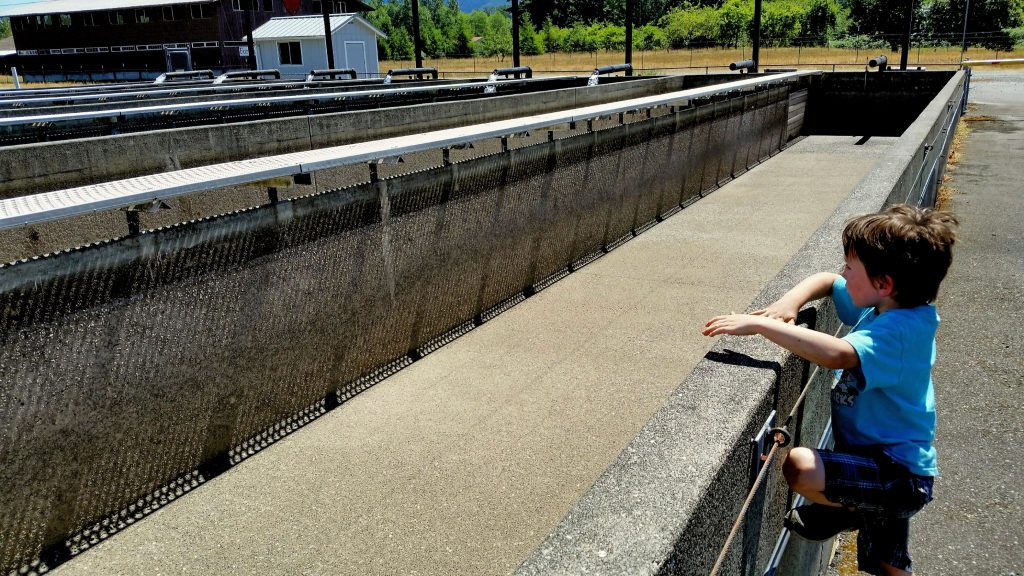
WDFW Commission To Look At Grim Proposed Budget Cuts Tallying $30.8 Million
Final decisions are still well down the road, but WDFW has identified a pretty jarring set of potential cuts tallying nearly $31 million due to budget reductions and other funding shortfalls for the Fish and Wildlife Commission to take a look at later this week.

The grim news comes just months after the agency had secured $27 million from the General Fund – at a moment when the Covid-19 pandemic had killed just 29 and sickened 366 in the state.
The list of possible cuts includes closing 10 hatcheries that, statewide, would cut Chinook, coho and chum production by 7.2 percent and trout and kokanee releases by 12.3 percent.
Hatchery repairs would also be cut 32 percent, “increasing the chances of catastrophic failures leading to loss of fish,” and coastal, Puget Sound and Columbia River fisheries would also be reduced, as would lands work, conservation and more.
The commission will begin mulling the proposals this Friday before making recommendations to lawmakers later this summer, but documents posted to WDFW’s website today outline a wide range of programs that might get hit.
It’s all in response to a directive from state financial managers who are projecting a gaping $9 billion hole in revenues due to coronavirus. This spring they asked agencies like WDFW to figure out how to make 15 percent reductions in what they’re budgeted from the state General Fund. But shortfalls from Pittman-Robertson and Dingell-Johnson Act disbursements, along with longer than expected personalized license plate sales and hatchery grant shortfalls are also wrapped up in the $30.8 million reduction.
The exercise is an early step in a process that will wrap up when legislators set the budget next year.
As it stands, WDFW’s proposed reductions amount to:
$5.7 million for fisheries and management, reduced crab outreach and lost gear recovery, along with less lake rehabs, and at least five game wardens
$5.2 million for salmon and steelhead production that would see closure of Reiter Ponds, Tokul Creek, Forks Creek, Nemah, Whitehorse and Mayr Bros hatcheries, and reductions in fish produced for orcas;
$2.7 million for lands management, wildlife area planning, Westside pheasant program, and at least three officers;
$2.7 million for conservation efforts;
$2.4 million for warmwater gamefish management, along with closure of the Meseberg hatchery;
$2.0 million for trout production that would see the closure of Arlington, Chelan, Naches and Mossyrock hatcheries, impacting a $61 million annual fishery;
And $1.3 million for programs that partner with volunteers to benefit fish and wildlife.
WDFW documents say that a $2.8 million shortfall from Pittman-Robertson excise taxes on guns and ammo would lead to reduced big game work and only half as much elk feeding, while $800,000 in Dingell-Johnson shortfalls would lead to netpen closures on Mayfield Lake and of the Omak Hatchery.
Hatchery grant shortfalls of $2.6 million would impact Toutle, Skamania and Elwha hatcheries, along with fisheries on the Columbia and its tribs.
WDFW says that it’s working on early outreach with stakeholders, and to that end today held a zoom meeting with members of its Budget and Policy Advisory Group.
“Reductions still have many steps to go through before they become reality,” the agency will tell the commission.
But it’s all a crushing blow after so much work by WDFW and BPAG led to big $27 million General Fund infusion from lawmakers earlier this year – in the early stages of Covid-19. I naively wrote at the time that I hoped it would be the last WDFW budget story I would have to do for a very long while.
If there are any glimmers of hope, it’s that Pittman-Robertson disbursements could theoretically be higher, given the very brisk pace of guns and ammo sales in recent months.
And just as the public is taking to the outdoors in large numbers, they’re also spending some of that time fishing, helping WDFW’s coffers.
“We’ve seen a rebound from the loss of license sales we experienced from the recreational closures associated with the Governor’s Stay Home/Stay Healthy Order that ran from late-March through May 4,” confirmed Nate Pamplin, WDFW policy director. “June revenue sales were up compared to June 2019, as were sales in the first couple weeks of July.”
With coronavirus putting many out of work and impacting where people can hang out with others, Pamplin says that WDFW’s wildlife areas, water access sites and other services such as fishing are putting what the agency does in “high demand.”
“Which in turn, that participation helps fuel an outdoor economy that generates revenue for small businesses ranging from mom-and-pop convenience stores to outdoor gear providers to boat retailers. That commerce then results in increased state tax revenue deposited back to the State General Fund. Hopefully, the fact that WDFW provides a fantastic return-on-investment will resonate with the Legislature this coming winter when they have to make some tough decisions on how to balance the state budget given the economic toll of the coronavirus,” he said.
Indeed, WDFW has touted that estimated 350 percent ROI from General Fund revenues in the past, but while it’s an astonishing figure, the cold reality is that it may only be as good as last week’s hot fishing report when lawmakers get around to their sausage making next year.
“This shortfall will likely not be shared equally between all state agencies, due to constitutionally protected work,” a WDFW writeup from a May BPAG meeting states. “Natural resource agencies, higher education, general government will likely carry a larger portion of the burden.”
